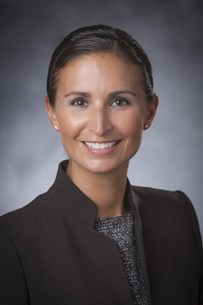Meeting
2016 ASCO Annual Meeting

Massachusetts General Hospital, Boston, MA
Jennifer Kay Plichta , Alan Semine , Claire T Cronin , Taryn Rourke , Caroline Cole Block , Kevin S. Hughes
Background: The new ACS screening mammography guidelines suggest that only women with an above average risk require mammography screening between ages 40-44 (≥15% lifetime risk of breast cancer and/or ≥5% risk of BRCA mutation). In addition, the ACS recommends yearly MRI if the lifetime risk is ≥20%. We previously found that 50% of women ages 40-44 who were evaluated at an academic breast surgery practice would be eligible for mammograms, MRI, and/or genetic testing. Here, we sought to determine these numbers at a community breast imaging center, which we assumed would be a cohort more representative of the general population. Methods: Under IRB approval, we reviewed a database from 10/1/2015 - 12/28/2015 of patient-reported risk factors and family history at a community breast imaging center. We excluded all men, and women with a history of breast cancer. Using Tyrer Cuzick, Claus, or BRCAPRO, those with a ≥15% lifetime risk of breast cancer or ≥5% risk of BRCA mutation (eligible for genetic testing) were considered above average risk. Those with a ≥20% lifetime risk were also eligible for screening MRI. We assessed these results in Jewish and non-Jewish women. Results: 7357 women age ≥40 years without breast cancer were evaluated. Of these, 909 (12.4%) were ages 40-44 and constitute our cohort. Risk assessment identified 485 women (53.4%) who were eligible for mammography. Conclusions: At this community breast imaging center, 53.4% of women ages 40-44 would have been eligible for screening mammography. These numbers were higher in Jewish women. Thus, it is critical that women ages 40-44 have formal risk assessment, in order to identify those who would qualify for screening mammography, screening MRI, and genetic testing.
| Non-Jewish N=806 (89%) | Jewish N=103 (11%) | Total N=909 (100%) | |
|---|---|---|---|
| All mammography | 410 (50.9%) | 75 (72.8%) | 485 (53.4%) |
| Mammography, no MRI or genetic testing | 169 (21%) | 29 (28.2%) | 198 (21.8%) |
| Mammography + MRI, no genetic testing | 176 (21.8%) | 12 (11.7%) | 188 (20.7%) |
| Mammography + MRI + genetic testing | 38 (4.7%) | 24 (23.3%) | 62 (6.8%) |
| Mammography + genetic testing, no MRI | 27 (3.3%) | 10 (9.7%) | 37 (4.1%) |
Disclaimer
This material on this page is ©2024 American Society of Clinical Oncology, all rights reserved. Licensing available upon request. For more information, please contact licensing@asco.org
2016 ASCO Annual Meeting
Poster Session
Cancer Prevention, Genetics, and Epidemiology
Prevention, Risk Reduction, and Genetics
Cancer Prevention
J Clin Oncol 34, 2016 (suppl; abstr 1557)
10.1200/JCO.2016.34.15_suppl.1557
1557
380
Abstract Disclosures
2023 ASCO Annual Meeting
First Author: Kimberly Badal
2022 ASCO Annual Meeting
First Author: Jinani Jayasekera
2023 ASCO Annual Meeting
First Author: Charlotte Ezratty
2023 ASCO Quality Care Symposium
First Author: Ashley J. Housten